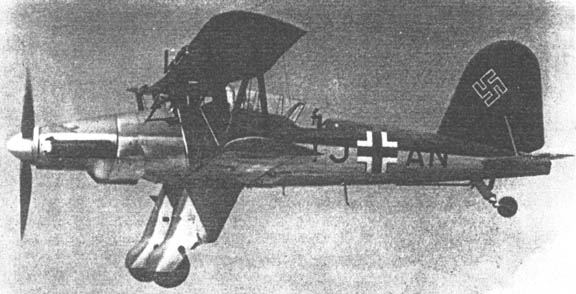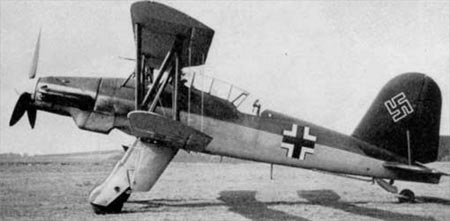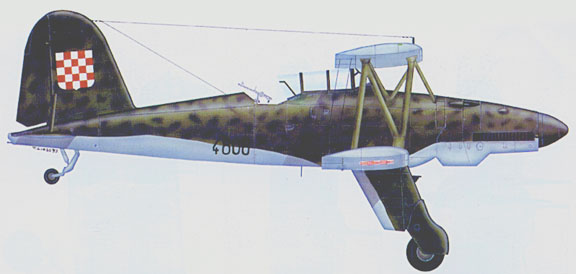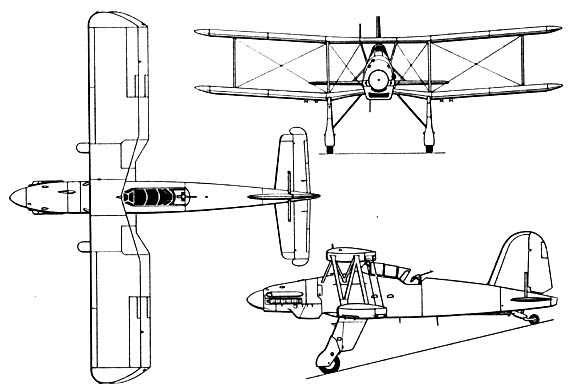Fieseler Fi167
The requirements of the German Navy before and during World War II
spawned several intriguing aircraft, ranging from the famed Arado
seaplanes to the less well known Fieseler Fi167. It is one of the
many interesting aviation designs of the period.

The Fi167 was made to meet a requirement for a ship-based, two-seat
aircraft, that was to serve as both a torpedo bomber and reconnaisance
aircraft. Both Fieseler and Arado submitted proposals, and each had
prototypes built. But under testing in late 1938, the Arado prototype
(the Ar195) was unable to meet the requirements set out for it.

The Fi167 V1, however, managed not only to meet but exceed the specifications.
The aircraft was a two-bay biplane with foldable wings. The body was
mostly metal, but with some fabric covering. It also had fixed landing
gear (including the tailwheel), braced tail and was powered by a Daimler-Benz
DB601B engine.

Like it's cousin, the famed Fi.156 "Storch", the Fi167
possessed remarkable low-speed performance. This was the result of
the wing design. Both sets of wings had ailerons and full-span slats
along the leading edges. When this was combined with the lift from
the biplane wings, it meant that the aircraft could sink extremely
slowly, even when nearly vertical, with the pilot in complete control
of the aircraft.
Unfortunately, this aircraft was made to serve on the carrier Graf
Zeppelin. When construction on the carrier was halted, so was
the production of Fi.167s. When the carrier's construction was restarted
in 1942, it was decided that a navalized version of the Junkers Ju.87
would do just as well.
A total of twelve Fi.167s were produced, and they were shipped off
to the Netherlands for testing with Erprobungsstaffel 167, and nine
were eventually sold to Romania.

Technical Data
Manufacturer: Fieseler
Type: Two-seat Reconnaisance/Torpedo Bomber
Powerplant: One 820-kW (1,100hp) Daimler-Benz 601B 12-cylinder
inverted Vee piston engine
Performance: Maximum speed 325 km/h (202mph); service ceiling
8200m (26,905ft); range 1500 km (932 miles)
Weights: Empty 2800kg (6,173lb); maximum take-off 4850kg (10,692lb)
Dimensions: Span 13.50m (44ft 3 ½ in); length 11.40m
(37ft 4 3/4in); height 4.80m (15ft 9in); wing area 45.50 meters sq.
(489.77 sq ft.)
Armament: One fixed forward-firing 7.92mm (0.3in) MG17 machine
gun, one MG15 (7.92mm-0.3in) on pivoting mount in rear of cockpit,
maximum load of one 1000kg (2,204lb) bomb, or one 756kg (1,687lb)
torpedo.


